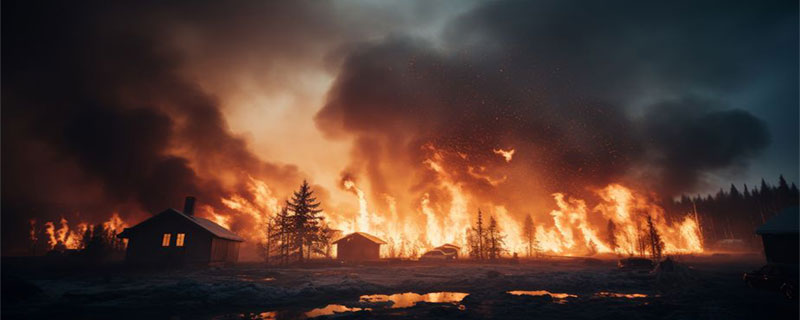PROTECTING HOMES FROM WILDFIRES
Researchers at Stanford University in America have engineered a revolutionary water-enhanced gel that could significantly improve how homes and critical infrastructure can be protected from wildfires, according to a feature by Interesting Engineering (8-23-24). Their findings suggest that this new gel far surpasses existing commercial solutions in both longevity and effectiveness.
Explaining the limitations of existing gels, Eric Appel, an associate professor of materials science and engineering at Stanford and the senior author of the study, stated,
“Under typical wildfire conditions, current water-enhancing gels dry out in 45 minutes. We’ve developed a gel that would have a broader application window—you can spray it further in advance of the fire and still get the benefit of the protection—and it will work better when the fire comes.”
The Stanford team’s breakthrough gel is designed to be more versatile and longer-lasting. Unlike traditional gels, which rely solely on water to create a protective barrier, this new formulation introduces a multi-layered defense mechanism. The gel is composed of a cellulose-based polymer combined with silica particles. When subjected to the intense heat of a wildfire, the water in the gel evaporates, and the cellulose burns away. What remains is a silica-based aerogel—a lightweight, porous material known for its excellent insulation properties.
Highlighting the significance of this discovery, Changxin “Lyla” Dong, the lead author of the study, said in the press release,
“We have discovered a unique phenomenon where a soft, squishy hydrogel seamlessly transitions into a robust aerogel shield under heat, offering enhanced and long-lasting wildfire protection. This environmentally conscious breakthrough surpasses current commercial solutions, offering a superior and scalable defense against wildfires.”
“They’re safe for both people and the environment,” Appel said. “There may need to be additional optimization, but my hope is that we can do pilot-scale application and evaluation of these gels so we can use them to help protect critical infrastructure when a fire comes through.”
Source: FEA









Leave a Reply
Want to join the discussion?Feel free to contribute!